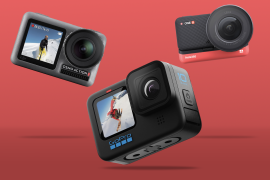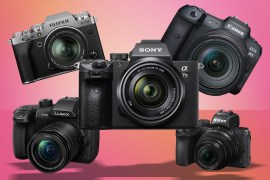Panasonic Lumix GH7 review: a refined recipe that now suits all shooters
Hybrid CSC builds on its predecessor with much improved autofocus
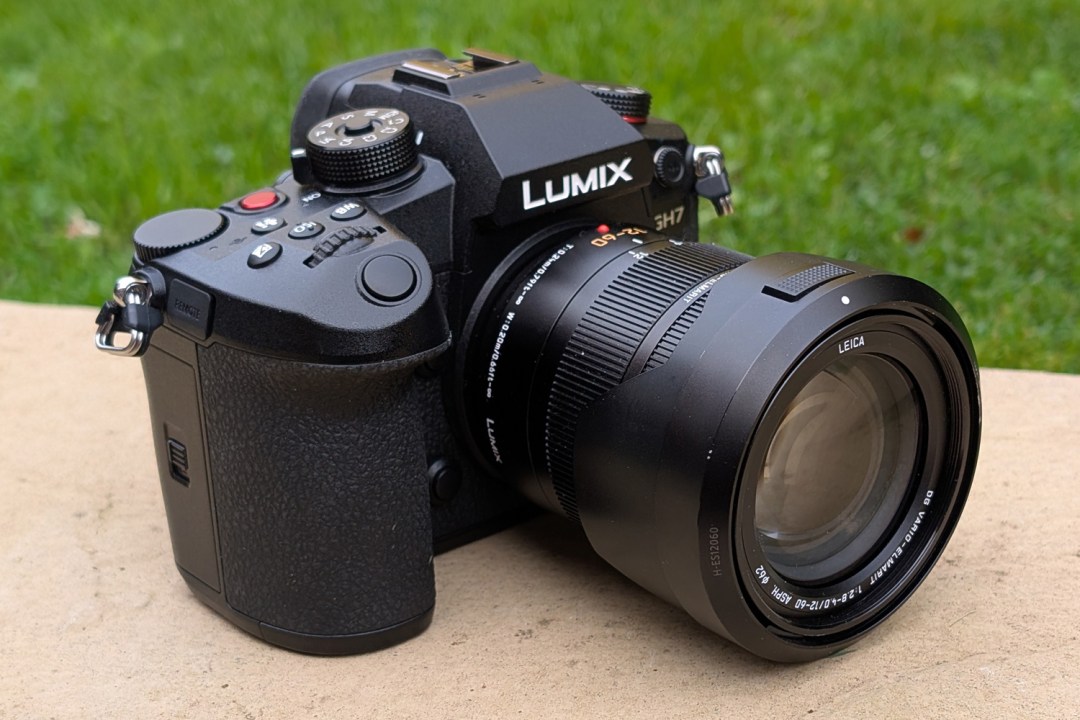
Stuff Verdict
More a refinement than a wide-ranging overhaul, but that just proves Panasonic already nailed it with the GH series. The Lumix GH7 continues the trend as a hybrid CSC that can pretty much do it all.
Pros
- Fast, accurate autofocus and effective stabilisation
- Equally effective for stills and video
- Comprehensive controls
Cons
- Not the most compact of compact system cameras
- Battery life could be better
Introduction
As some of the first mirrorless cameras to properly get 4K video recording, the Panasonic Lumix GH series has been a regular go-to for amateur movie makers – even after rivals muscled in with full-frame alternatives for similar cash. The firm’s most recent effort had a Hollywood backlot’s worth of recording formats, along with outstanding image stabilisation in a (relatively) compact body.
The Panasonic Lumix GH6 relied on an ageing autofocus system that couldn’t compete with newer phase-detect tech seen elsewhere, though. The Lumix GH7 addresses that pain point, while also improving its smart subject recognition and audio recording abilities.
Micro Four Thirds converts will be happy to see Panasonic continuing to fly the flag for the format, too. Can a new generation of the little sensor that could challenge full-frame filmmakers from the likes of Sony, Canon and the rest?
How we test cameras
Every camera reviewed on Stuff is tested in a range of lighting conditions, with a variety of subjects and scenes. We use our years of experience to compare with rivals and assess ergonomics, features and general usability. Manufacturers have no visibility on reviews before they appear online, and we never accept payment to feature products.
Find out more about how we test and rate products.
Design & build: four-thirds sensor, full scale size
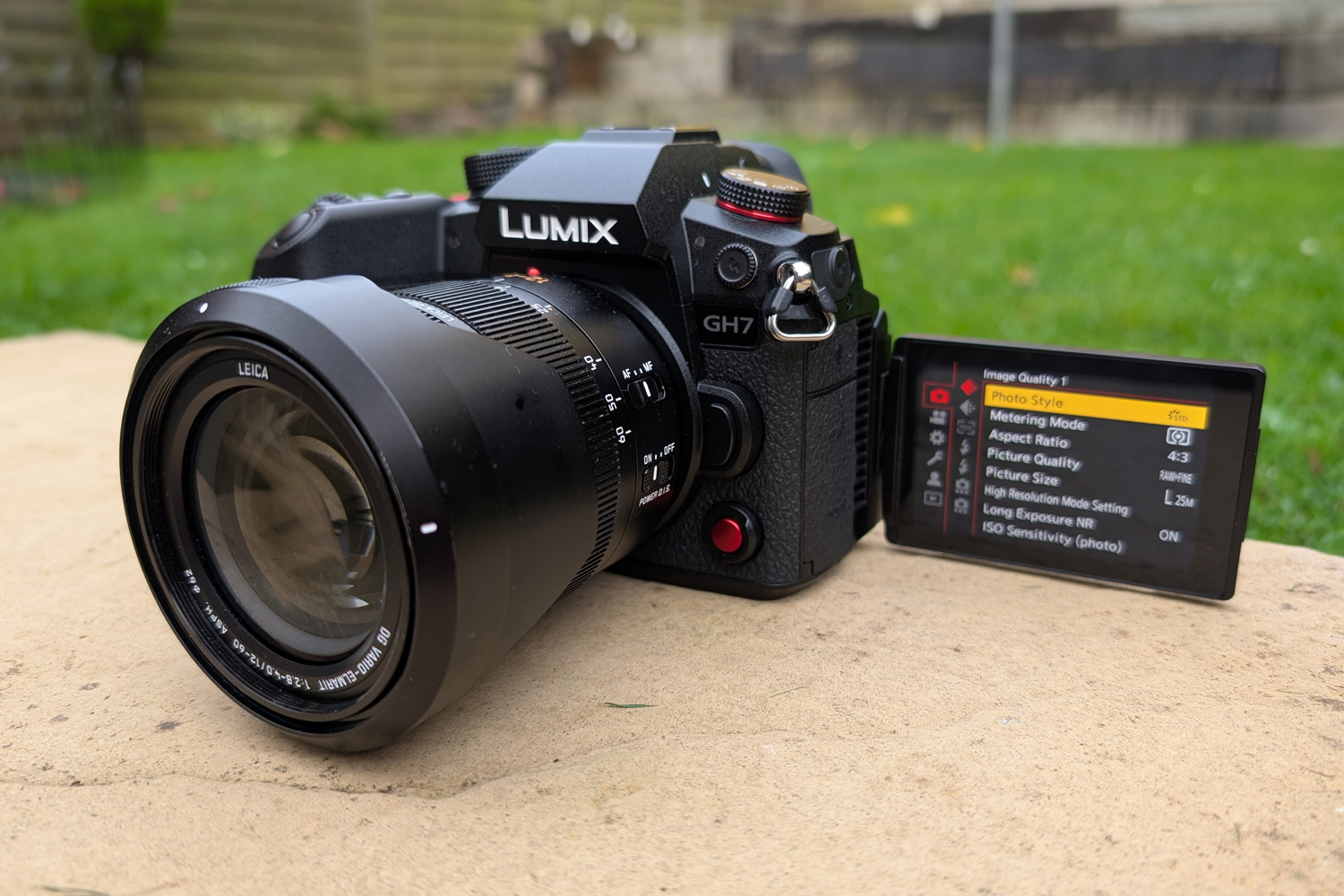
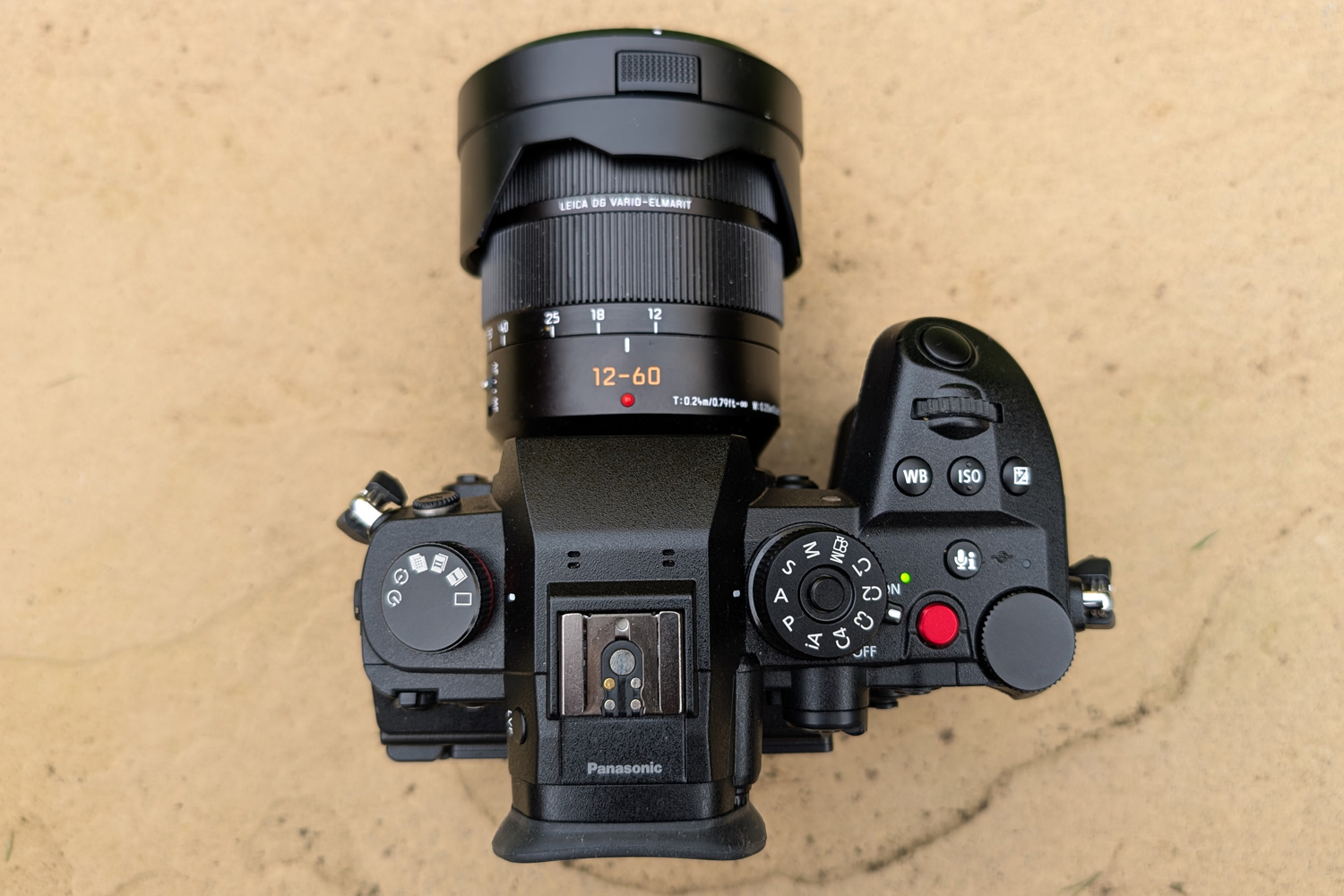
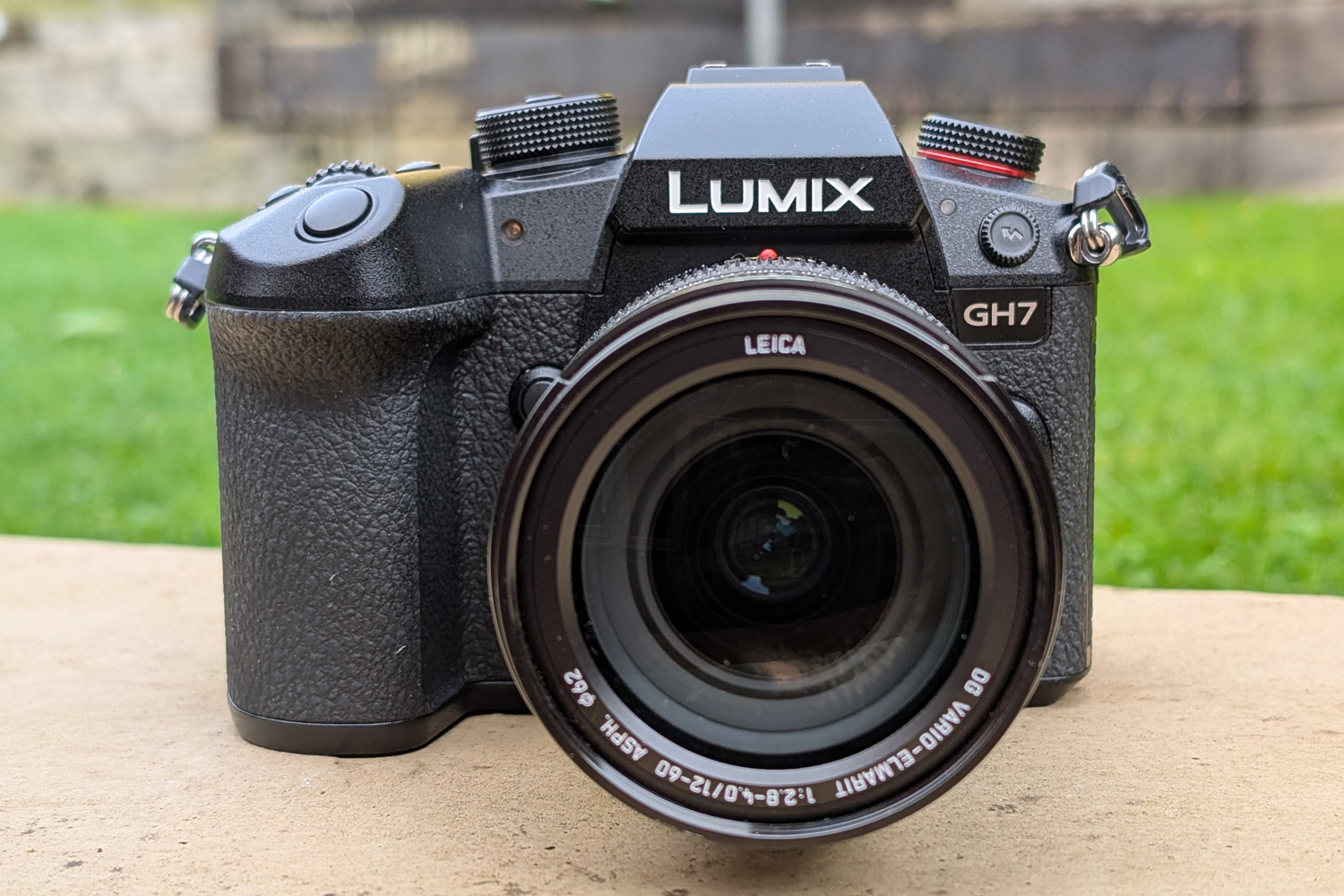
On the surface there’s little to separate the Panasonic Lumix GH7 from its predecessor. Model number on the front aside, the two cameras use the same body and have an identical control layout. That’s no bad thing, as I can’t fault the placement of all the buttons and dials. There’s a physical control for almost everything, and it all falls naturally under your fingers.
It means this is still a somewhat hefty camera, feeling more like a slightly shrunken DSLR than a typical mirrorless body. That said, Micro Four Thirds lenses tend to be on the lighter side, so I had no problem carrying it around for a day of shooting. The chunky hand grip gives you something substantial to hold onto.
Videographers won’t mind the bulk, as it’s there in part to accommodate an internal cooling fan. It allows for limitless recording in an extensive range of resolutions and formats – more on those later.
The fan makes the rotating touchscreen protrude out a bit from the magnesium alloy body, but not so much I was bonking my nose on it every time I brought the electronic viewfinder up to my eye. A two-stage tilt, swivel arm and ability to face forwards for vlogging make it about as comprehensive a display as I’ve used lately. The air vents behind it don’t affect the camera’s weatherproof build, either.
Features & battery life: film friendly
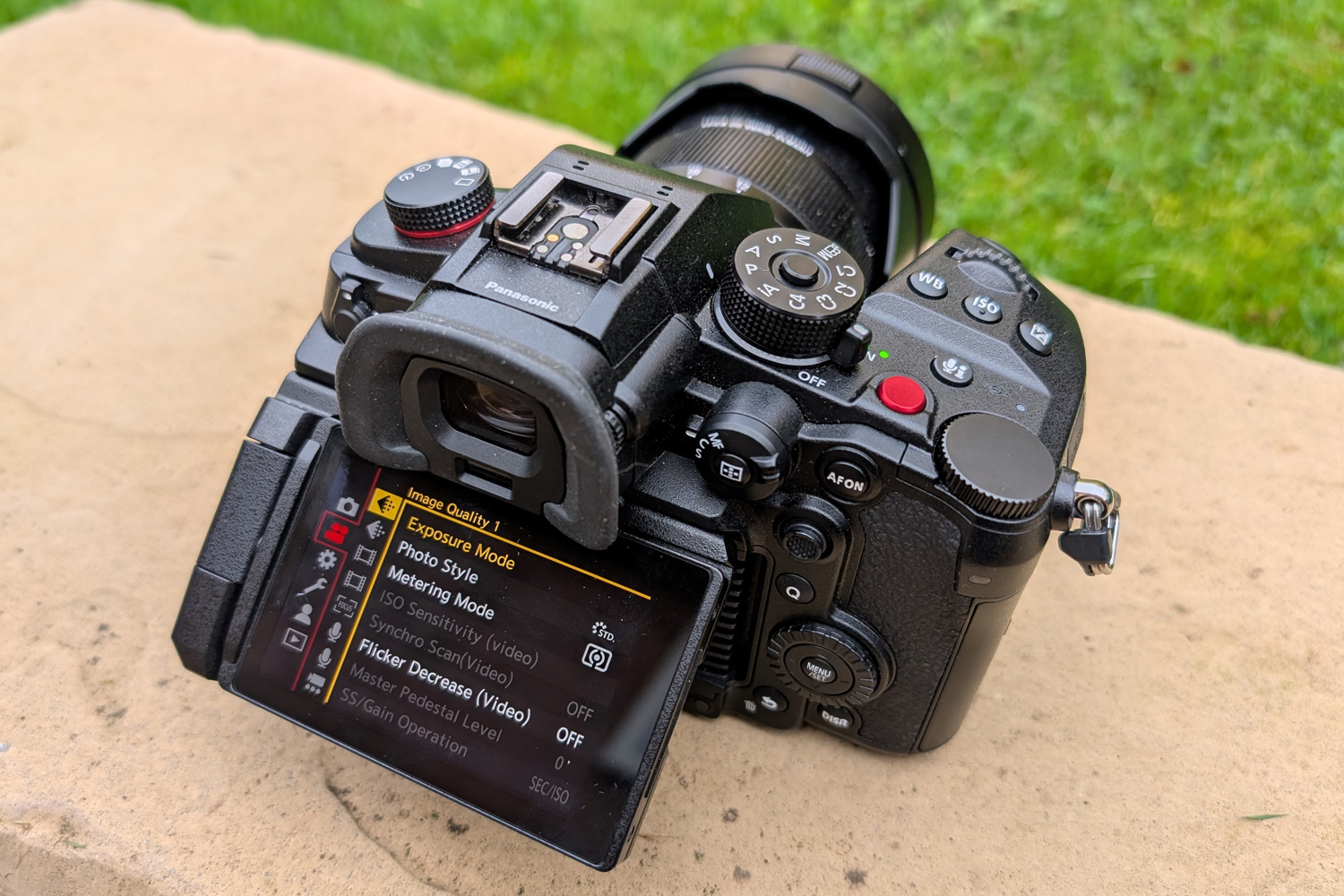
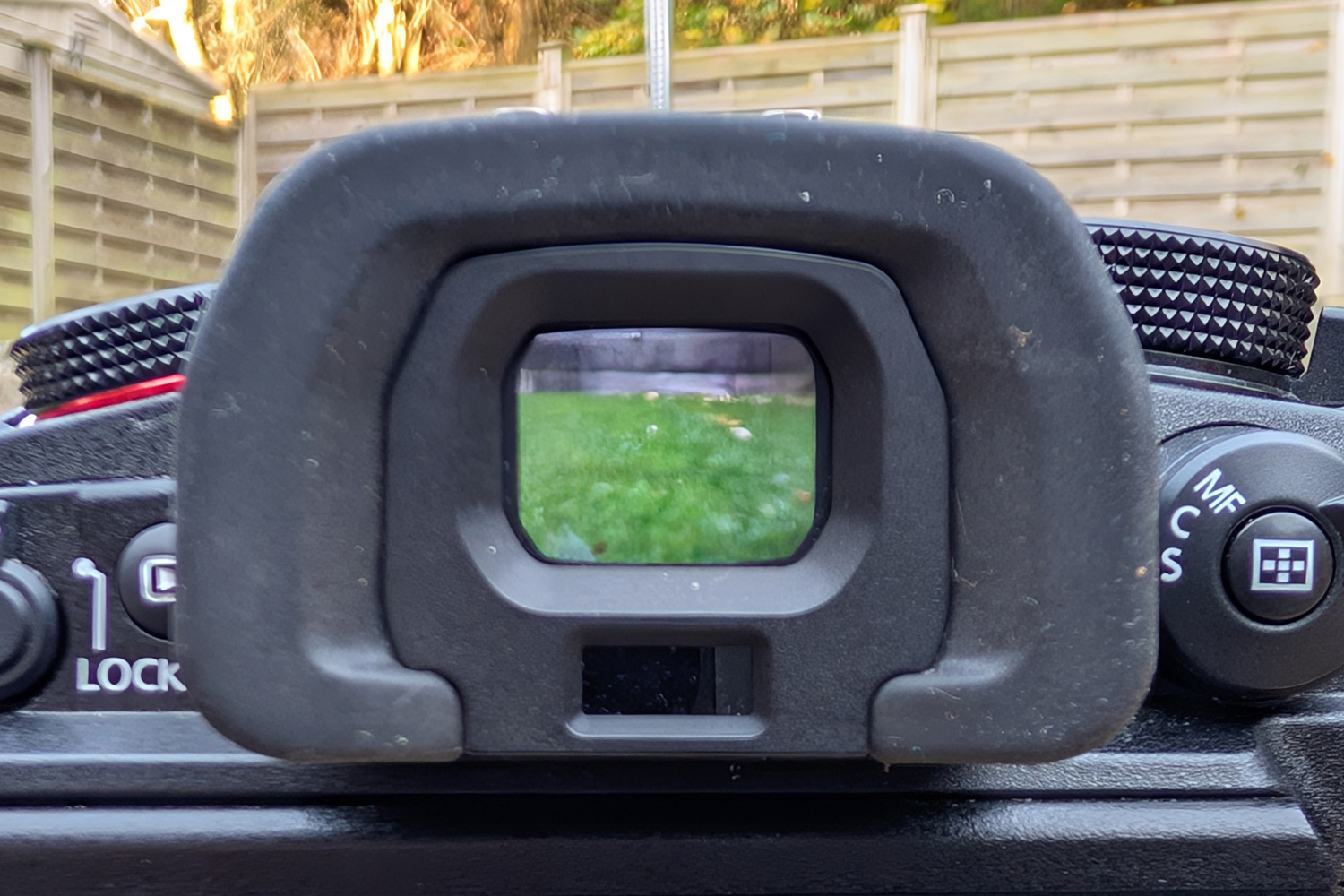
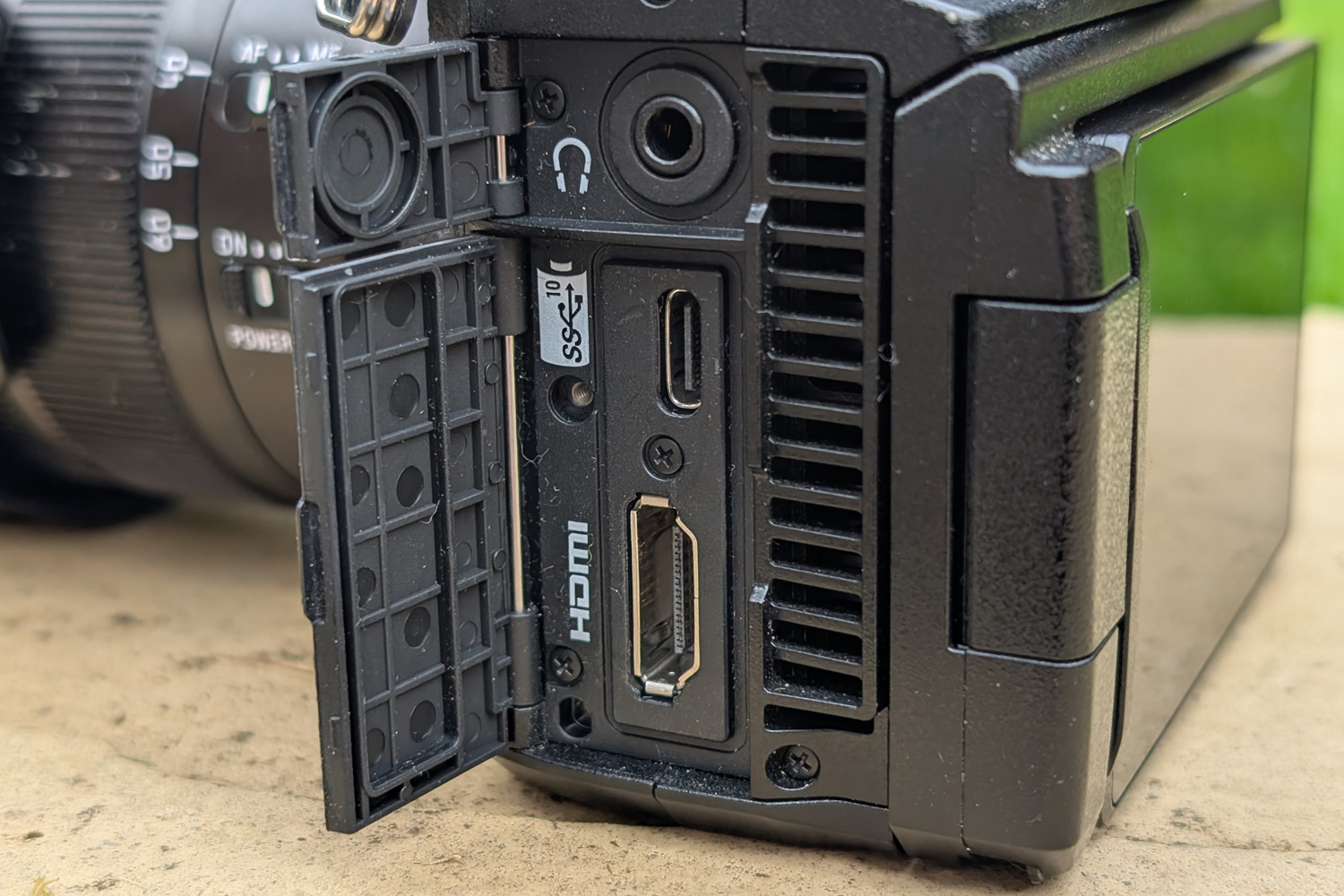
You can spot clues that point to the GH7’s movie making skills everywhere you look, from the second record button on the front of the body (perfect for vloggers) to the pair of tally lights – one front, one rear – that indicate you’re filming. There’s also a button on the top plate dedicated to sound settings.
Flipping open the left side port cover reveals a full-size HDMI port for outputting to an external display, along with a USB-C port that supports SSD recording. There are also separate 3.5mm ports for a microphone and headphone monitoring, and the hot shoe lets you attach Panasonic’s DMW-XLR2 accessory for clipping-free 32-bit float audio recording.
The door on the opposite side covers a CFexpress Type B slot – essential for interruption-free recording in the GH7’s most data-intensive formats – and an SDXC card slot that’s better suited to saving stills. There are a bunch of different backup options if you have both slots occupied.
Onboard Wi-Fi and Bluetooth make pairing to Panasonic’s Lumix Lab smartphone companion app easy enough, for quick image transfer and remote shooting. It’s also handy for loading LUTs onto the camera for mixing up your shooting style.
Not every video-centric CSC has a top tier EVF, but Panasonic hasn’t skimped for the Lumix GH7. The 3.68-million dot resolution is wonderfully sharp and the 120fps maximum refresh rate should guarantee you don’t miss the moment when shooting stills.
Battery life is really the only stumble, with video recording usually draining a full charge in little over an hour. I rarely matched Panasonic’s 80-90 minute claim. You’ll want to pack spares for a full day of filming. The GH7 copes better with stills, officially averaging between 280-260 shots, although that’s for single images. Shooting in bursts, I managed considerably more before needing to recharge.
Performance: speed demon
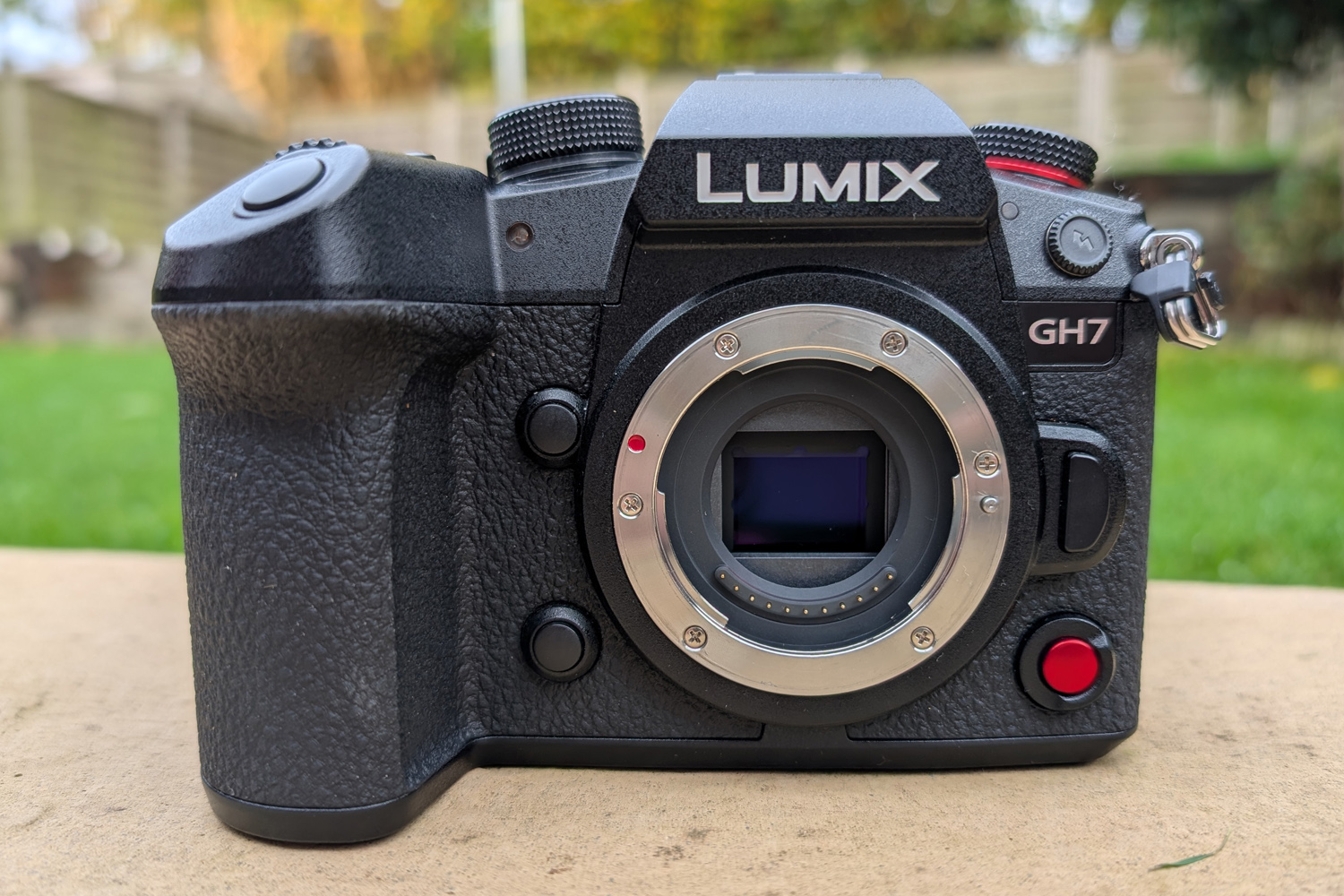
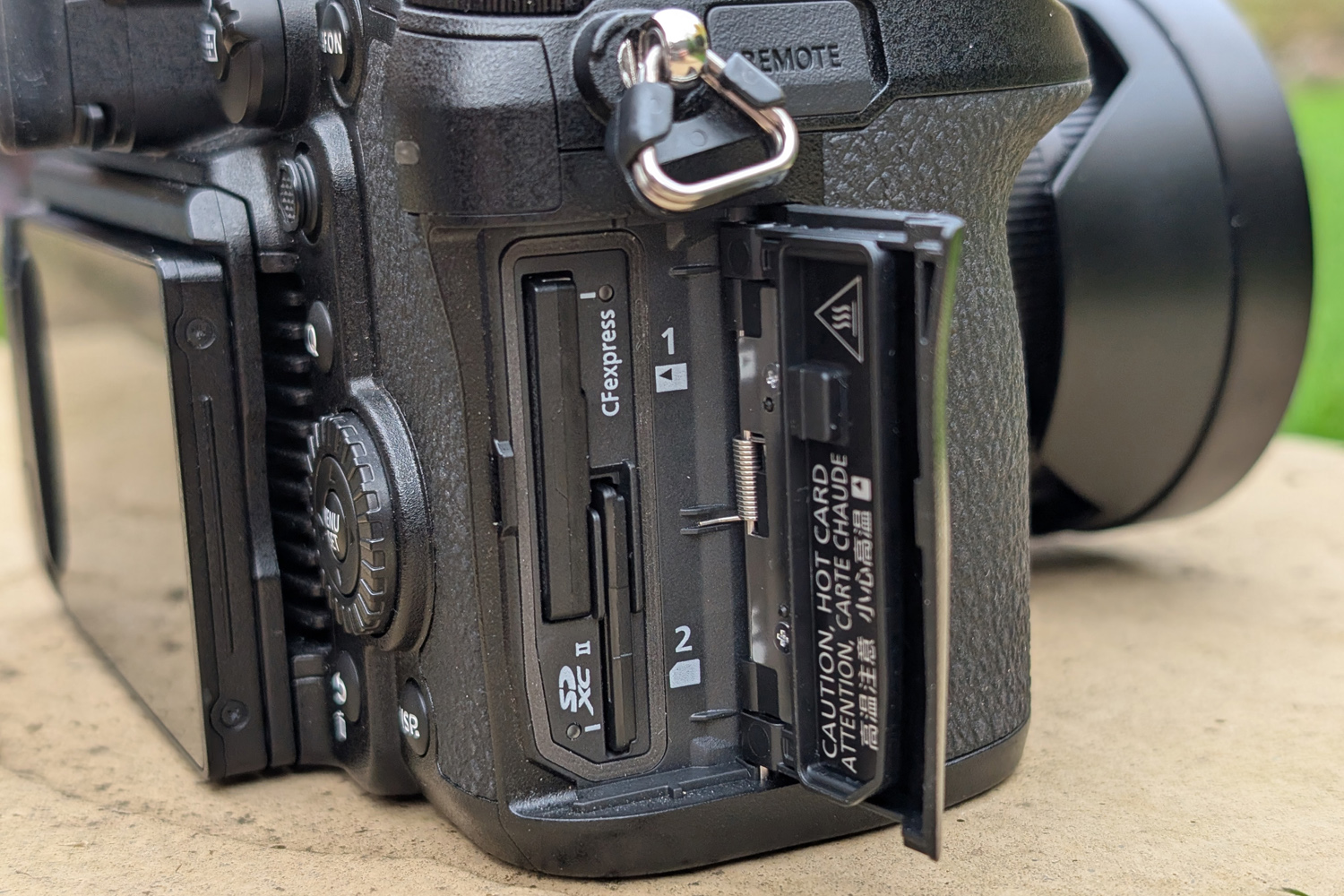
A GH series camera that added phase-detection autofocus to its bag of tricks has been a long time coming. The Lumix GH7 is now much closer to its nearest rivals for how quickly it can find and lock focus on a subject, even if Canon still maintains its lead. I was impressed with how well the camera held focus on moving subjects, ensuring a greater number of my shots ended up usable.
Improved human face and eye detection help here, not being thrown off by busy scenes. There are options to have it recognise cars, animals, motorbikes, trains and planes now, too. You’ve got to pick one, rather than have it work out what object you’re focusing on automatically, but that’s true of most cameras with the tech.
Top marks to the GH7 for its shooting speed, too. It’ll manage 14fps with autofocus when using the mechanical shutter, and can deliver 60fps with the electronic shutter. If you don’t mind manual focus, it’ll manage a blistering 75fps. With decently fast CFexpress or SD cards, you’ll rarely (if ever) hit the memory buffer.
Image stabilisation also continues to be Panasonic highlight, whether shooting video or stills. Panning and static settings kept my footage impressively smooth, and if you use a lens with built-in OIS you can get almost gimbal-like stability without any extra kit. I also got usable shots at impressively high shutter speeds, even while zoomed in.
Image quality: one sharp sensor
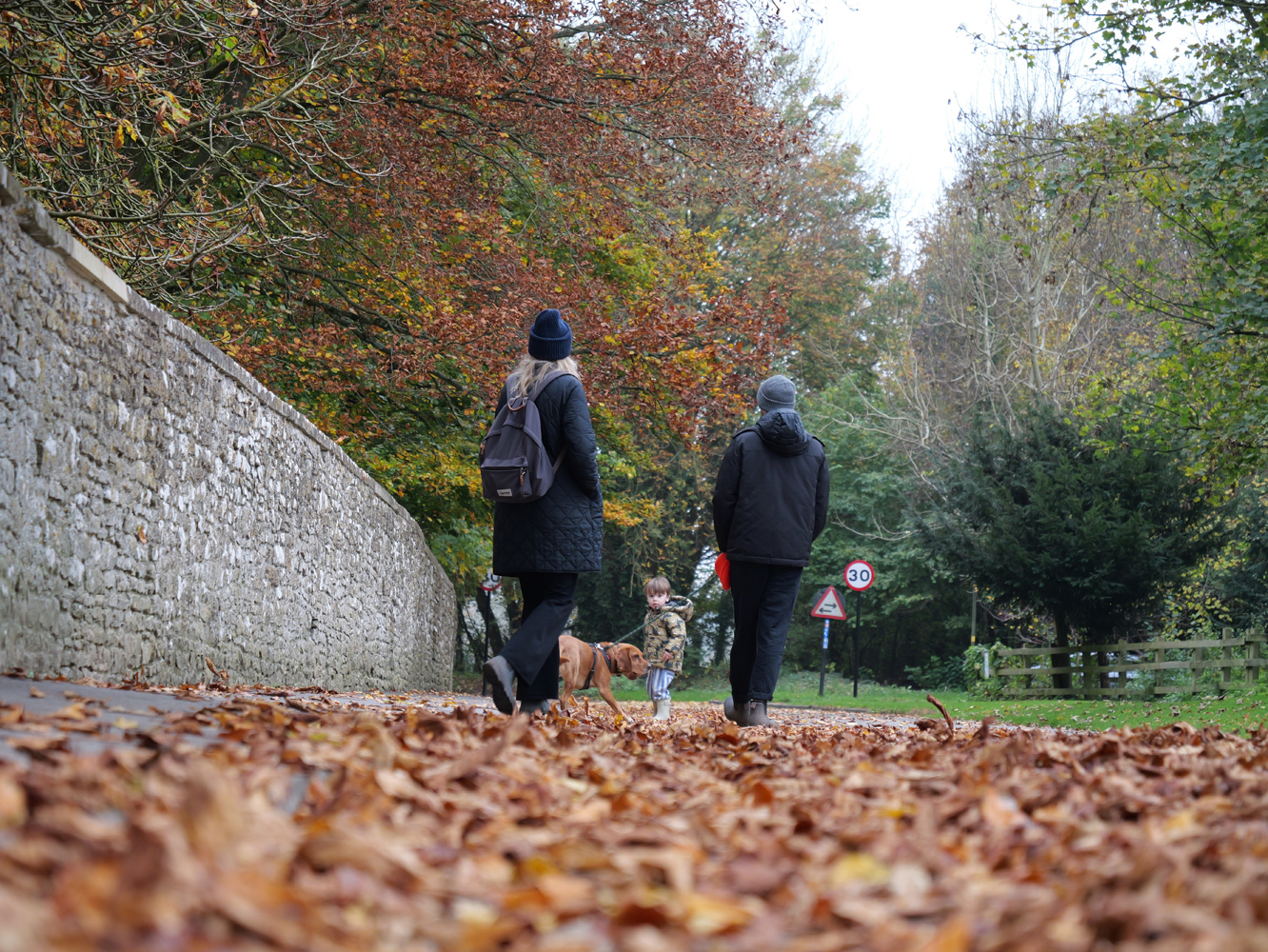



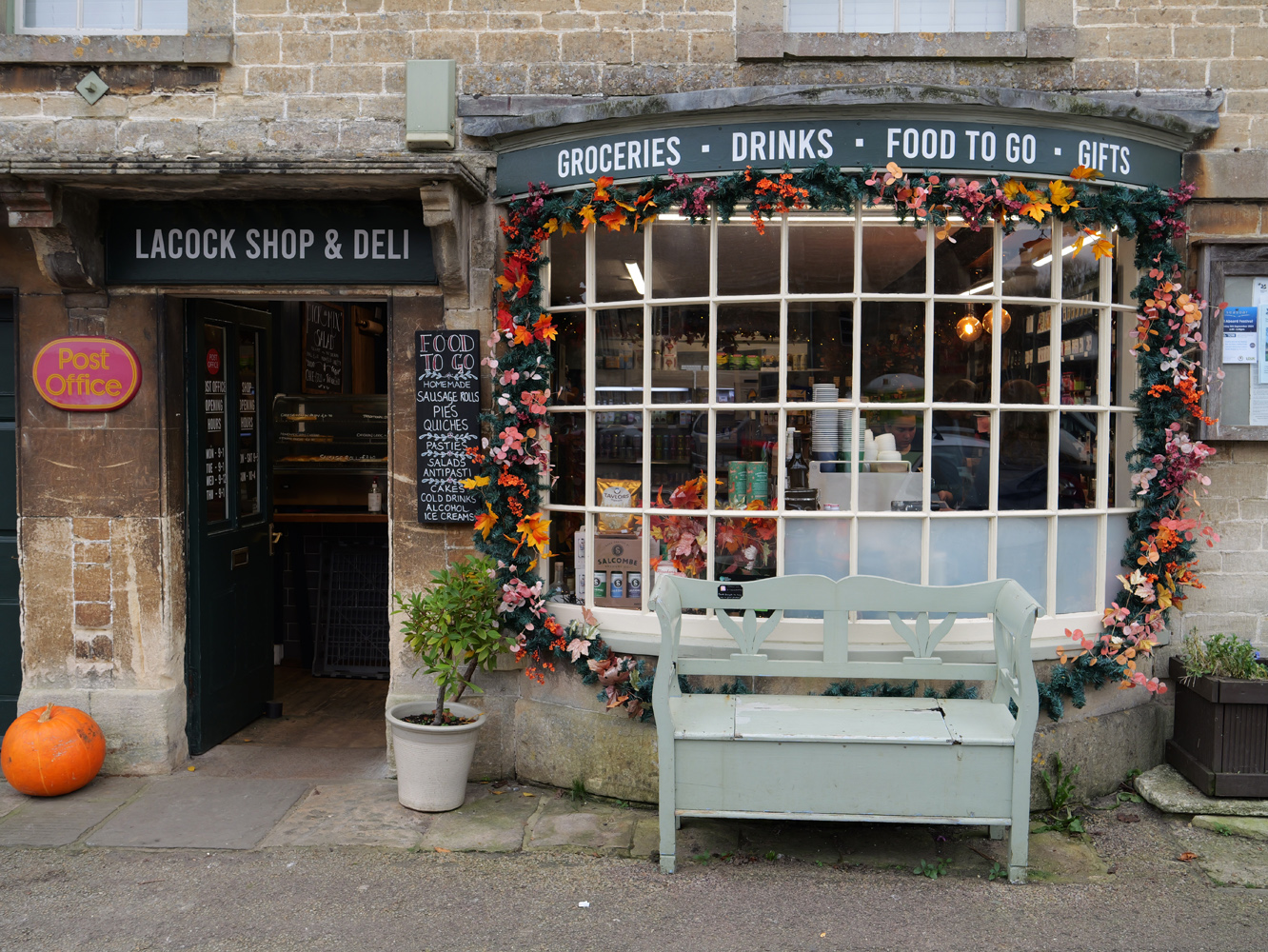

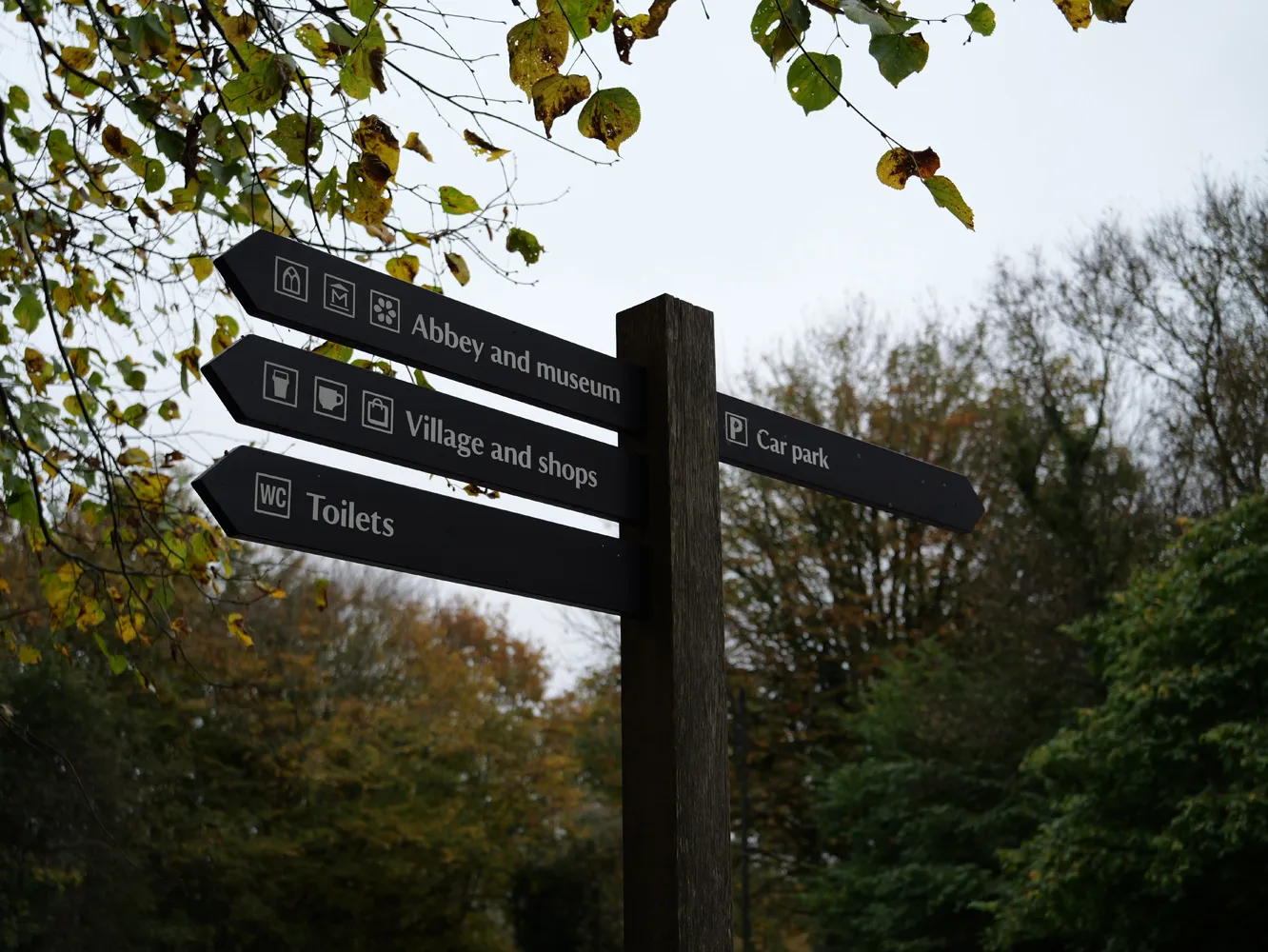
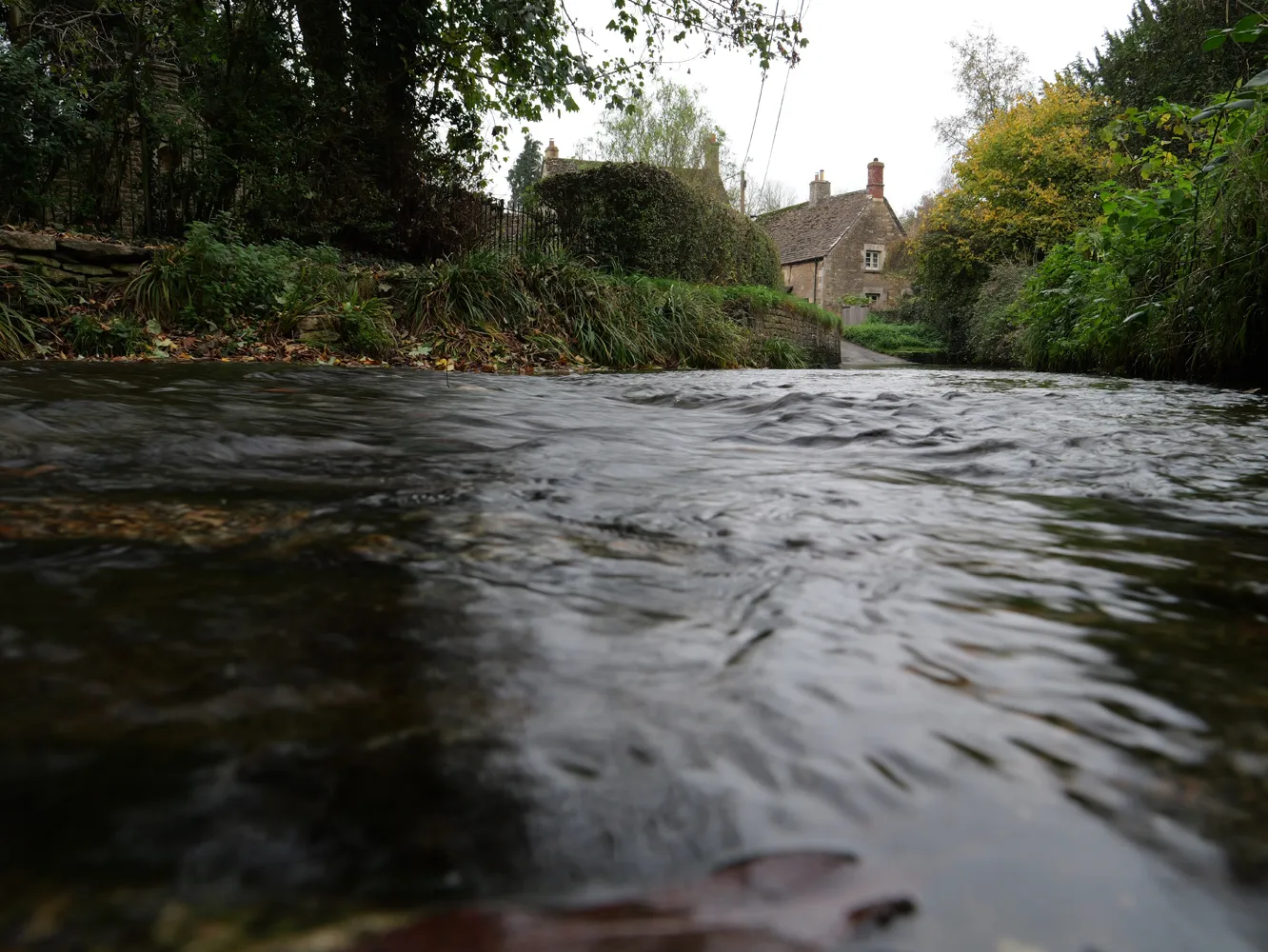
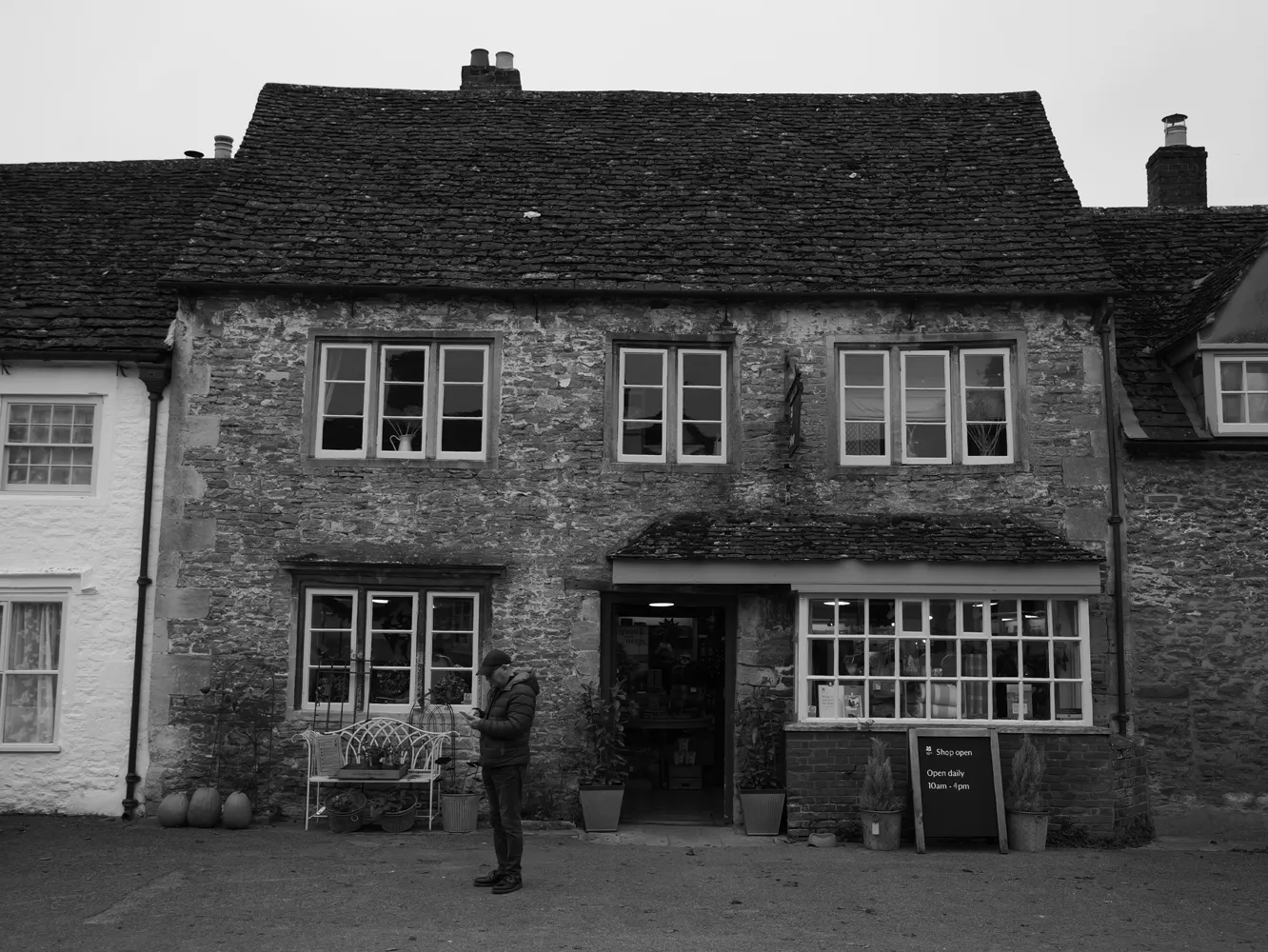
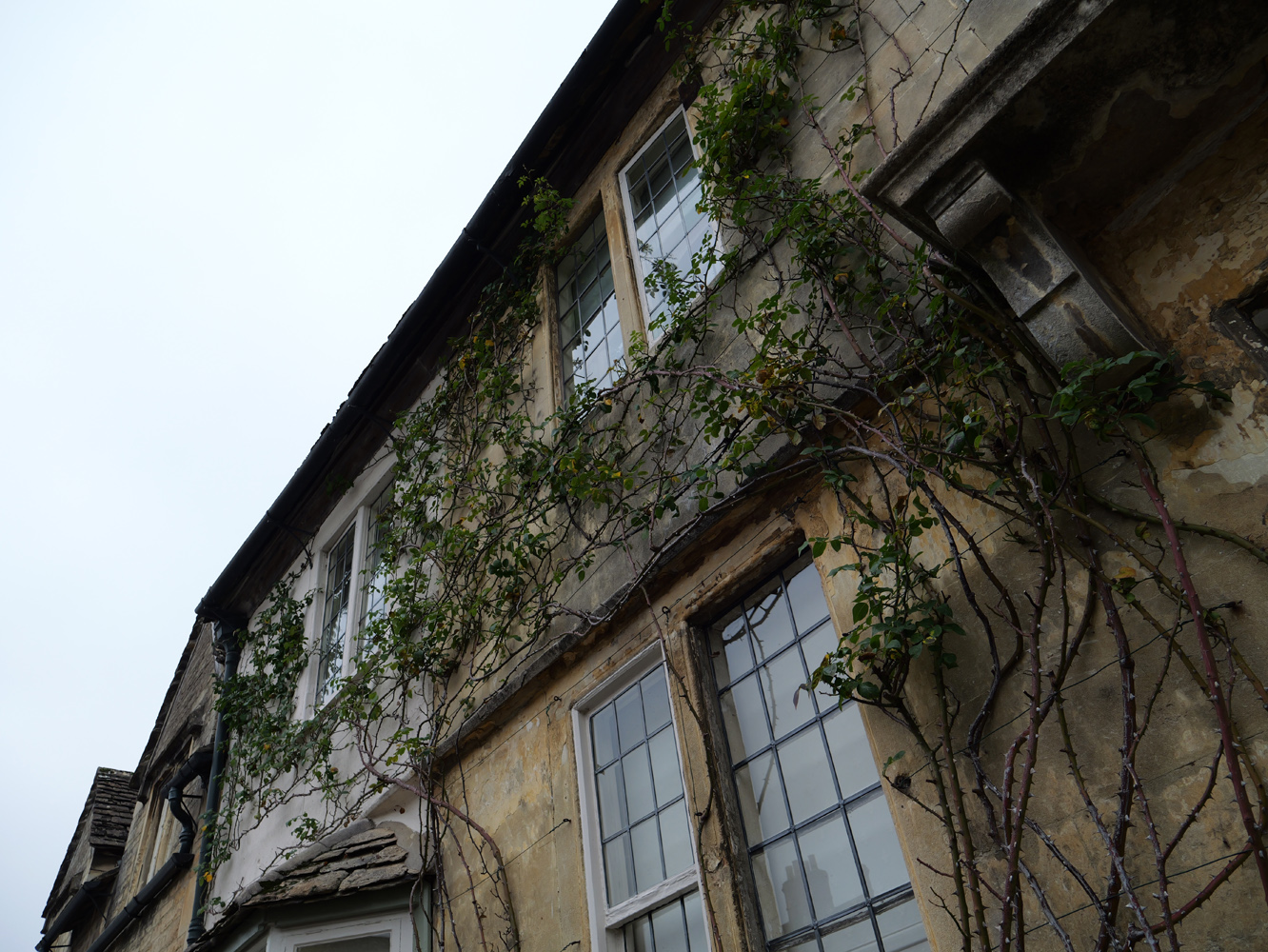
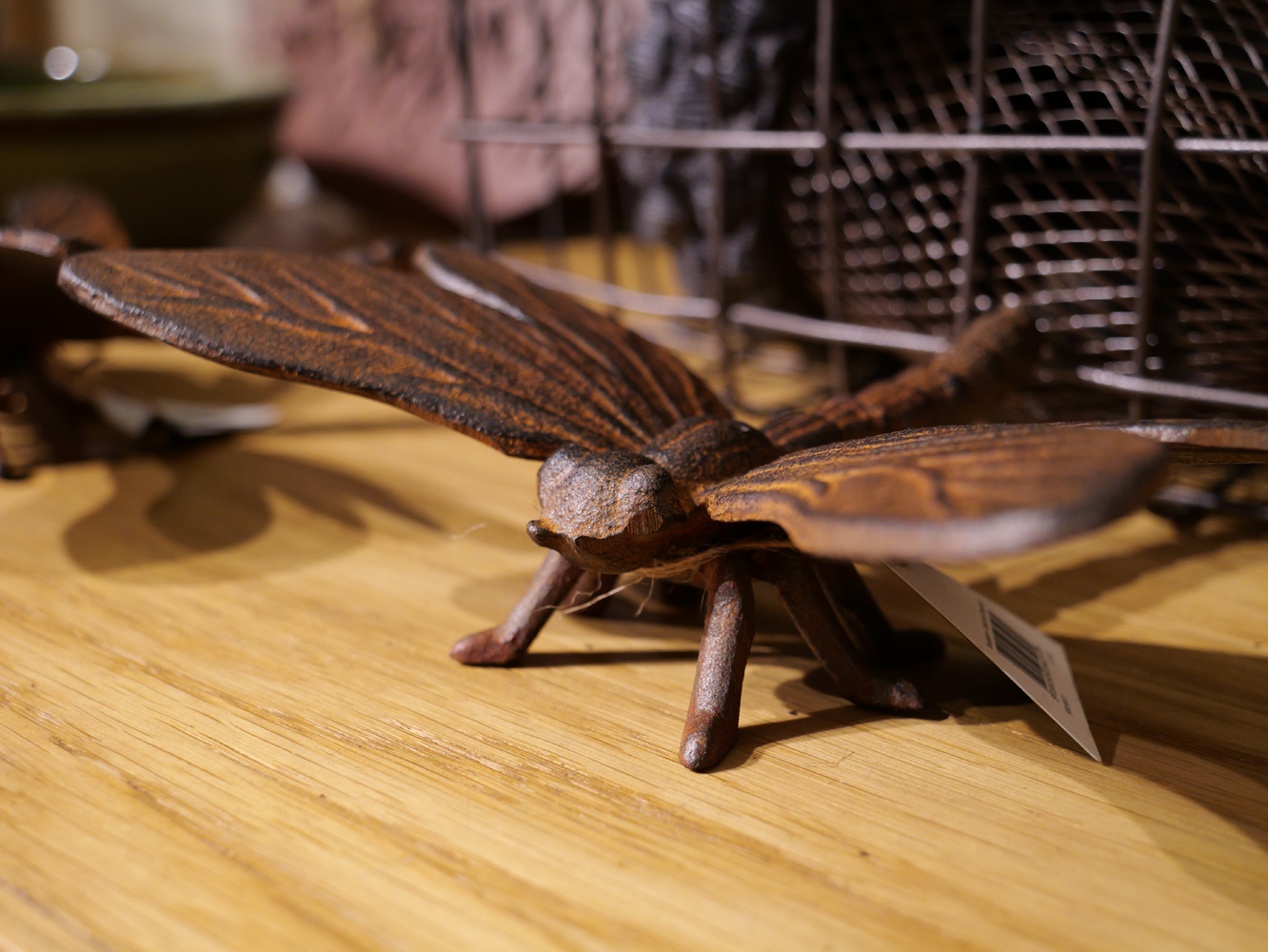


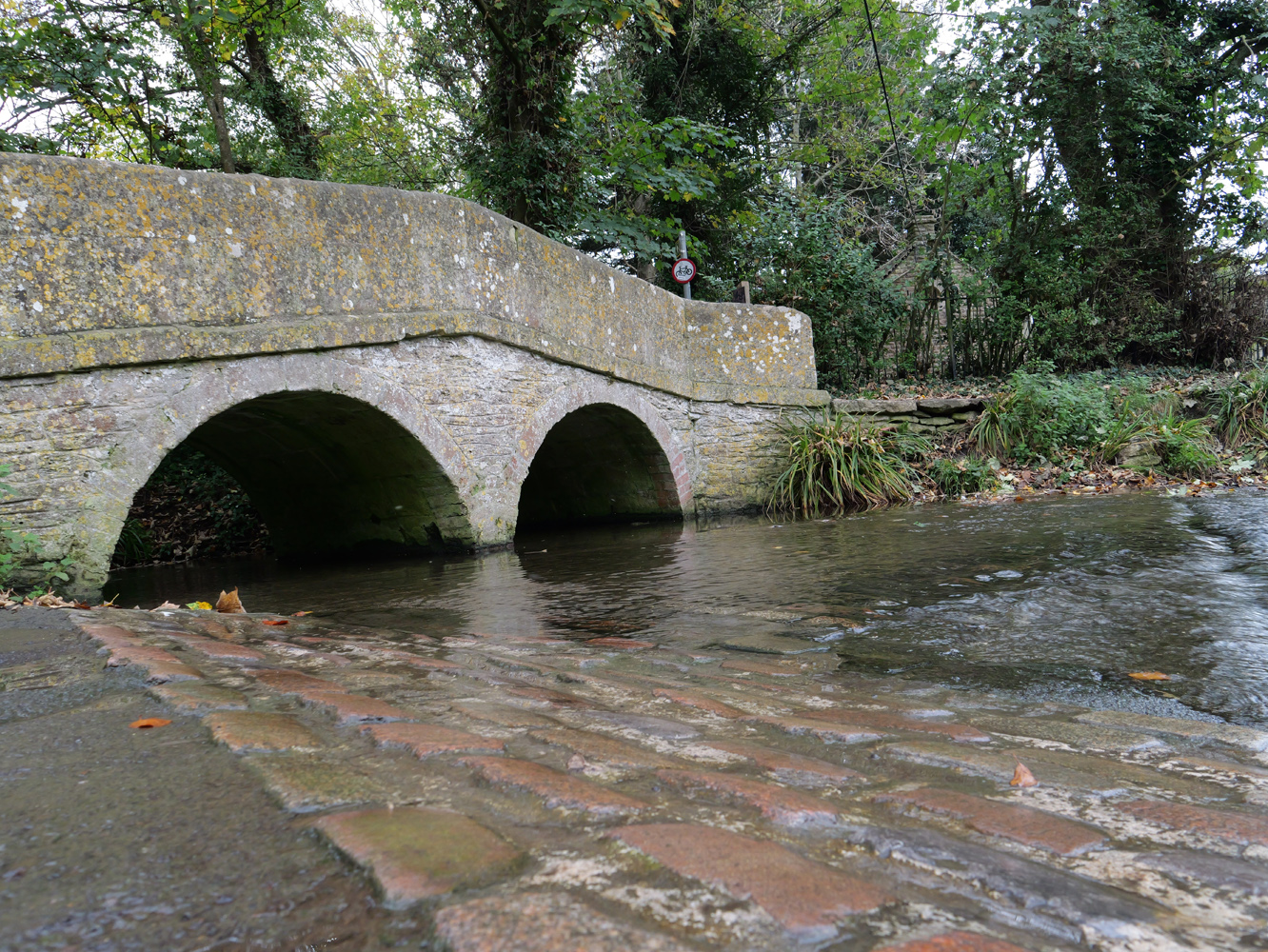
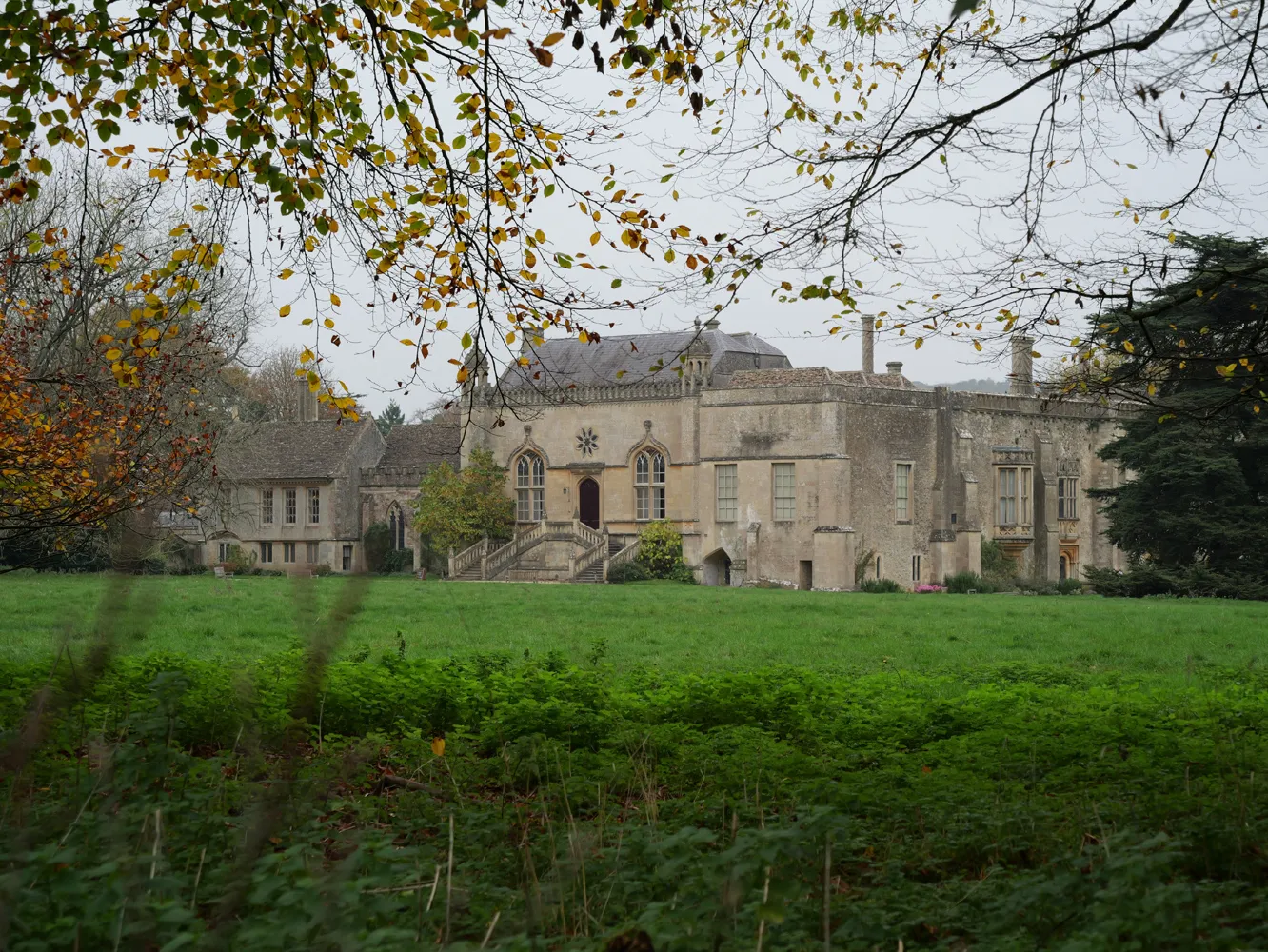
The GH7 is built around a new 25.2MP backside-illuminated CMOS sensor, which Panasonic has paired with the latest version of its Venus Engine image processor. My testing was done using the firm’s 12-60mm f/2.8-4.0 all-rounder lens.
Let’s get the sensor size issue out of the way first. No, the GH7 can’t entirely escape the limitations of Micro Four Thirds, with slightly noisier images than an APS-C or full-frame alternative at the same ISO. There’s less dynamic range available in each RAW file, too – though Panasonic’s Dynamic Range Boost function does help a lot here.
I’m talking minor differences, too. Unless I was shooting in the darkest of low-light scenes, you’d struggle to tell my sample shots came from a MFT camera. Dynamic Range Boost copes better with high contrast subjects than the GH6 did, and the colour tones stayed very true to life out of the camera. Switching to vivid mode gave more vibrant colours directly from the camera, for when you don’t fancy spending a lot of time editing RAW files.
With the same sensor and image processor as the Panasonic G9 II, there’s no denying this camera can deliver wonderfully detailed stills – and if resolution matters most, the in-camera high resolution photo mode is ideal for architecture and landscape shooting. It doesn’t force you to compile multiple frames in post, and doesn’t demand you shoot on a tripod either.
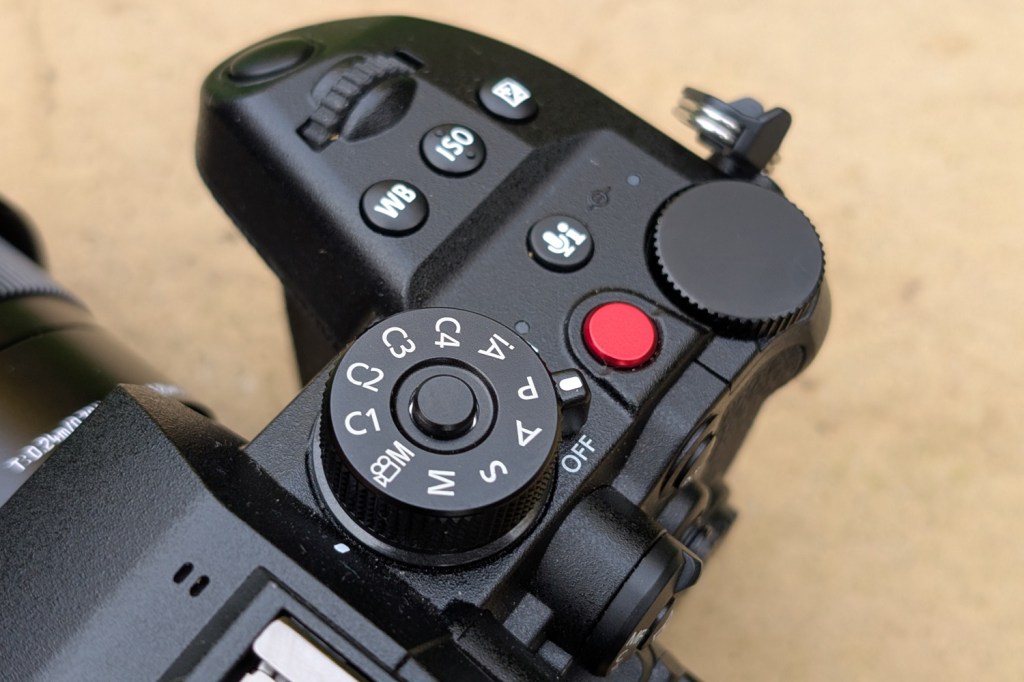
Video performance is even more impressive. For starters it can shoot in an impressive number of formats and resolutions, topping out with 5.7K/30p ProRes RAW HQ. There’s also open-gate 10-bit 4:2:0 recording at 5.7K/60p, and C4K recording at 120fps. With no storage restrictions and the internal fan keeping the hardware cool, I could record for as long as I had card capacity. The fan stayed quiet enough that it didn’t intrude on my captured footage, either.
There’s no knocking how sharp and detailed film clips look straight out of the camera, and being able to apply LUTs for instant colour grading is a great way to speed up your edits.
Panasonic Lumix GH7 verdict
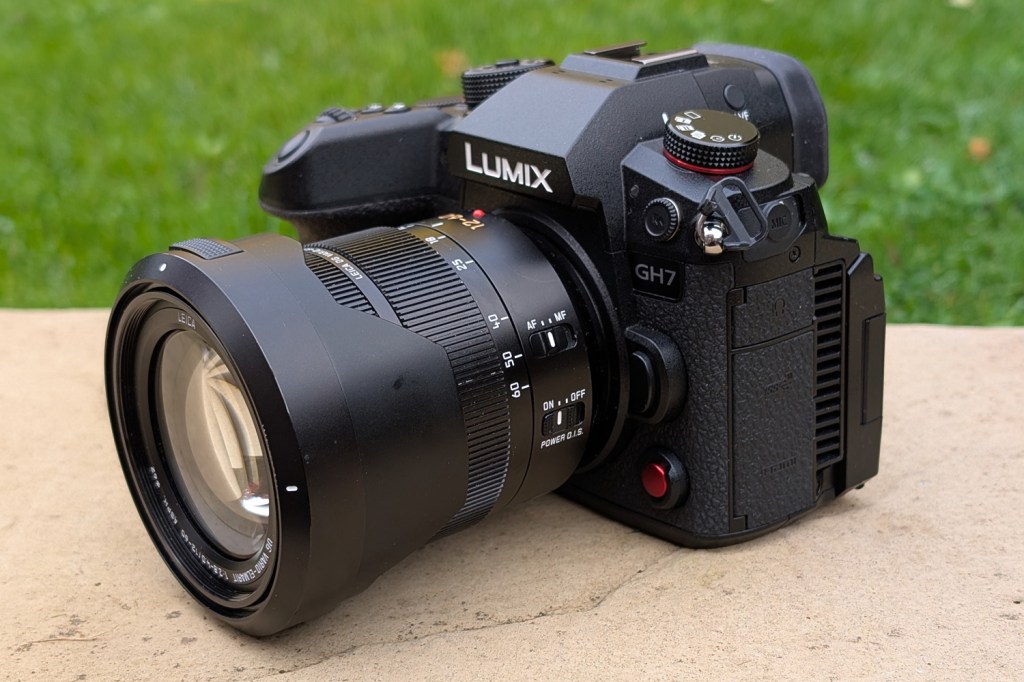
Panasonic didn’t have to change much to make the Lumix GH7 an improvement over its predecessor – but the changes it has made really do add up. Faster, more accurate autofocus puts this camera up there with APS-C and full-frame rivals, and the Micro Four Thirds sensor comfortably keeps pace in the vast majority of lighting situations.
This remains one of the best mirrorless cameras for video recording, with an outstanding choice of formats and effectively limitless recording. Unless you’re obsessed with the shallowest depth of field, and don’t shoot in low light scenarios, you’ll be blown away by the GH7’s performance.
Many of the GH7’s key features will be lost on you if you don’t shoot that much video, making the G9 II a better choice if you’re all-in on Panasonic. There’s no shortage of equally outstanding still shooters out there from other brands, too. However, Micro Four Thirds die-hards that want to make movies will be hard pressed to find something as fully-featured.
Stuff Says…
It’s more of a refinement than a wide-ranging overhaul, but that only proves Panasonic nailed it with previous GH models. The Lumix GH7 continues the trend as a hybrid CSC that can pretty much do it all.
Pros
Fast, accurate autofocus and effective stabilisation
Equally effective for stills and video
Comprehensive controls
Cons
Bad stuff 1
Bad stuff 2
Panasonic Lumix GH7 technical specifications
| Sensor | 25.2MP micro-four thirds |
| Lens mount | Micro Four Thirds |
| ISO range | ISO 50-25,600 (extended) |
| Continuous shooting | 75fps (electronic/AFS) |
| Video recording | 5.7K 60fps, 4K 120fps, FHD 240fps |
| Screen | 3in, 1.84m-dot LCD |
| Viewfinder | 3.68m-dot, 120fps OLED |
| Storage | CFexpress Type B, UHS-II SD |
| Connectivity | USB-C, 3.5mm, HDMI |
| Dimensions | 138x100x99.6mm, 805g |



